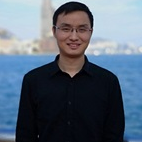Flat Bands: Fundamentals and Applications
A special issue of Photonics (ISSN 2304-6732).
Deadline for manuscript submissions: closed (20 June 2023) | Viewed by 5123
Special Issue Editors
Interests: nonlinear optics; beam shaping and optical manipulation; photonic flat bands; photonic lattices; topological photonics
Special Issue Information
Dear Colleagues,
Flat-band systems, as represented by lattices hosting at least one completely dispersionless energy band, have attracted enormous interest in different branches of physics, ranging from condensed matter to exciton polaritons, and from ultracold atoms to photonics. As the kinetic energy is completely quenched, particle-enhanced interaction makes flat-band systems a perfect candidate for the investigation of complex many-body quantum states and strongly correlated many-body physics in the absence of a magnetic field. On the other hand, advances in fabrication techniques not only provide insights into fundamental concepts and phenomena and motivate the continued study of disordered, quantum, and strongly interacting flat band systems but also lead to new techniques for harnessing flat-band physics in future micro- and nano-scale devices.
This Special Issue aims at presenting state-of-the-art articles on both the theoretical and experimental studies within the umbrella of flat band physics.
In this Special Issue, original research articles and reviews are welcome. Research areas may include (but are not limited to) the following:
- Strongly correlated spin, electronic and bosonic systems with flat bands;
- Finetuning and perturbations of flat bands;
- Flat bands and disorder/nonlinearity;
- Flat bands and non-Hermitian;
- Flat bands and topology;
- Novel experimental platforms;
- Flat bands and applications.
Dr. Liqin Tang
Dr. Shiqiang Xia
Guest Editors
Manuscript Submission Information
Manuscripts should be submitted online at www.mdpi.com by registering and logging in to this website. Once you are registered, click here to go to the submission form. Manuscripts can be submitted until the deadline. All submissions that pass pre-check are peer-reviewed. Accepted papers will be published continuously in the journal (as soon as accepted) and will be listed together on the special issue website. Research articles, review articles as well as short communications are invited. For planned papers, a title and short abstract (about 100 words) can be sent to the Editorial Office for announcement on this website.
Submitted manuscripts should not have been published previously, nor be under consideration for publication elsewhere (except conference proceedings papers). All manuscripts are thoroughly refereed through a single-blind peer-review process. A guide for authors and other relevant information for submission of manuscripts is available on the Instructions for Authors page. Photonics is an international peer-reviewed open access monthly journal published by MDPI.
Please visit the Instructions for Authors page before submitting a manuscript. The Article Processing Charge (APC) for publication in this open access journal is 2400 CHF (Swiss Francs). Submitted papers should be well formatted and use good English. Authors may use MDPI's English editing service prior to publication or during author revisions.
Keywords
- strongly correlated spin, electronic and bosonic systems with flat bands
- finetuning and perturbations of flat bands
- flat bands and disorder/nonlinearity
- flat bands and non-hermitian
- flat bands and topology
- novel experimental platforms
- flat bands and applications






